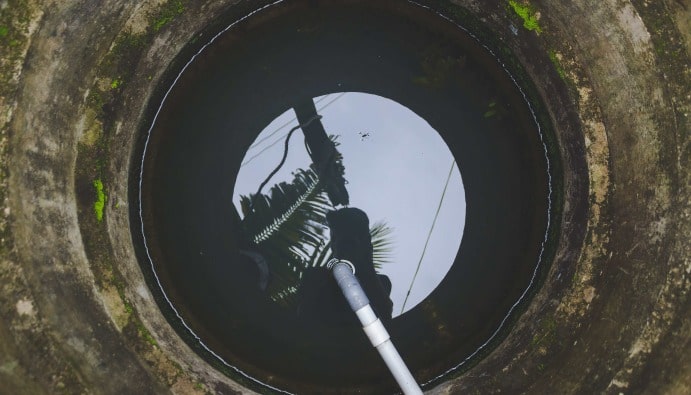Well Water Analysis: Water Quality Assessment
Why are Well Water Analyzes Performed?

Well Water Analysis
Analyzes should be carried out continuously and should not be neglected when using well water. Well water storage areas and water tanks become contaminated in a shorter time than normal. Black spot formation is seen in water tanks due to pollution and this is undesirable. The cause of pollution is usually water pollutants coming from the soil. The iron and mineral ratios of well water also vary and therefore blackening occurs in a short time in the tanks where they are stored.
Well waters are widely used water sources for drinking, irrigation and industrial purposes. However, the fact that groundwater can be exposed to natural and man-made pollution makes it mandatory to regularly analyze well water quality.
We can evaluate drinking water in three groups as obtaining and using it.
- Rainwater (water accumulated in cisterns and similar areas)
- Water accumulated on surfaces (rivers, lakes, streams, dams and similar sources.)
- Groundwater extracted (springs and wells)
Importance of Well Water Analysis
Well water may appear to be filtered through natural processes because it is derived from underground aquifers, but it carries various risks.
- Natural Contamination: Properties such as high iron, manganese, arsenic and hardness caused by minerals in the earth's crust.
- Anthropogenic Pollution: Factors such as pesticides, nitrates leaching from fertilizers and sewage leaks.
Well water analyses are necessary to assess the water's potability, suitability for irrigation and compliance with industrial standards.
Criteria Used in the Evaluation of Well Water Quality
Physical, chemical, biological and microbiological parameters are analyzed to determine the quality of well water.
1. Physical Parameters
- Color: Clean water should be colorless. Coloration may indicate the presence of minerals or organic matter.
- Turbidity: High turbidity is a sign of suspended solids in the water.
- Odor and Taste: Normally water should be tasteless and odorless. Odor or taste changes may indicate the presence of organic or chemical contaminants.
2. Chemical Parameters
- pH: Well water should generally be between pH 6.5-8.5.
- Hardness (Calcium and Magnesium): High hardness can create problems for domestic and industrial use of water.
- Nitrate and Nitrite: Can be at high levels, especially in agricultural areas, and are dangerous to human health.
- Heavy Metals: The presence of metals such as arsenic, lead and mercury can lead to toxic effects.
- Total Dissolved Solids (TDS): Indicates the amount of minerals and salts in water. TDS level should be below 500 mg/L.
- Arsenic Determination: An analysis to determine the arsenic content of water or other samples, assess toxicity risks and check whether legal limits are met.
- Lead Determination: It is a test that determines the amount of lead present in samples and enables the assessment of possible environmental and health hazards.
- Mercury Determination: It is an analysis performed to ensure that the limit values are not exceeded, especially due to its toxic effects, by measuring the mercury content.
- Ammonium Determination: A test to assess pollution and water quality by determining the level of ammonium in water or other samples.
- Determination of Chloride: It is an analysis applied to evaluate the corrosion effects and chemical balance of water by measuring the amount of chloride ion in samples.
- Sulfate Determination: It is a method performed to determine the sulfate ion content and is used especially in water quality analyzes.
- Conductivity Determination: It is a test that evaluates the mineral content and purity level of water by measuring the electrical conductivity capacity of a sample.
- Trichloroethylene Determination: A measurement to analyze toxicity and pollution risks by determining trichloroethylene levels in environmental samples.
- Determination of Tetrachloroethylene: It is an analysis to assess environmental and industrial pollution risks by determining the concentration of tetrachloroethylene.
3. Biological Parameters
- Microbiological Pollution: The presence of pathogenic microorganisms such as coliform bacteria, E. coli prevents the use of water for drinking purposes.
Nanolab Laboratories Group continues to provide services within the scope of Well Water Analysis. We also provide services in Wastewater Analysis.
Contact us for more information.
You can follow us on LinkedIn for up-to-date news and shares about our services.
Follow our Instagram account to be informed about our latest blog posts.

